
Until recently, I didn’t know what a Dutch oven was. When I first heard the term, I admit to doing a quick online search because, being a keen cook and baker, I felt a bit ignorant not knowing. Then, I realized I’d been using one for years, but I called it a cast-iron pan. Mystery solved.
A Dutch oven is an indispensable piece of cookware in the kitchen, and I wouldn’t be without mine. So, for you to benefit too, here I explain what a Dutch oven is and how you can make the most of one in your kitchen.
What is a Dutch oven?
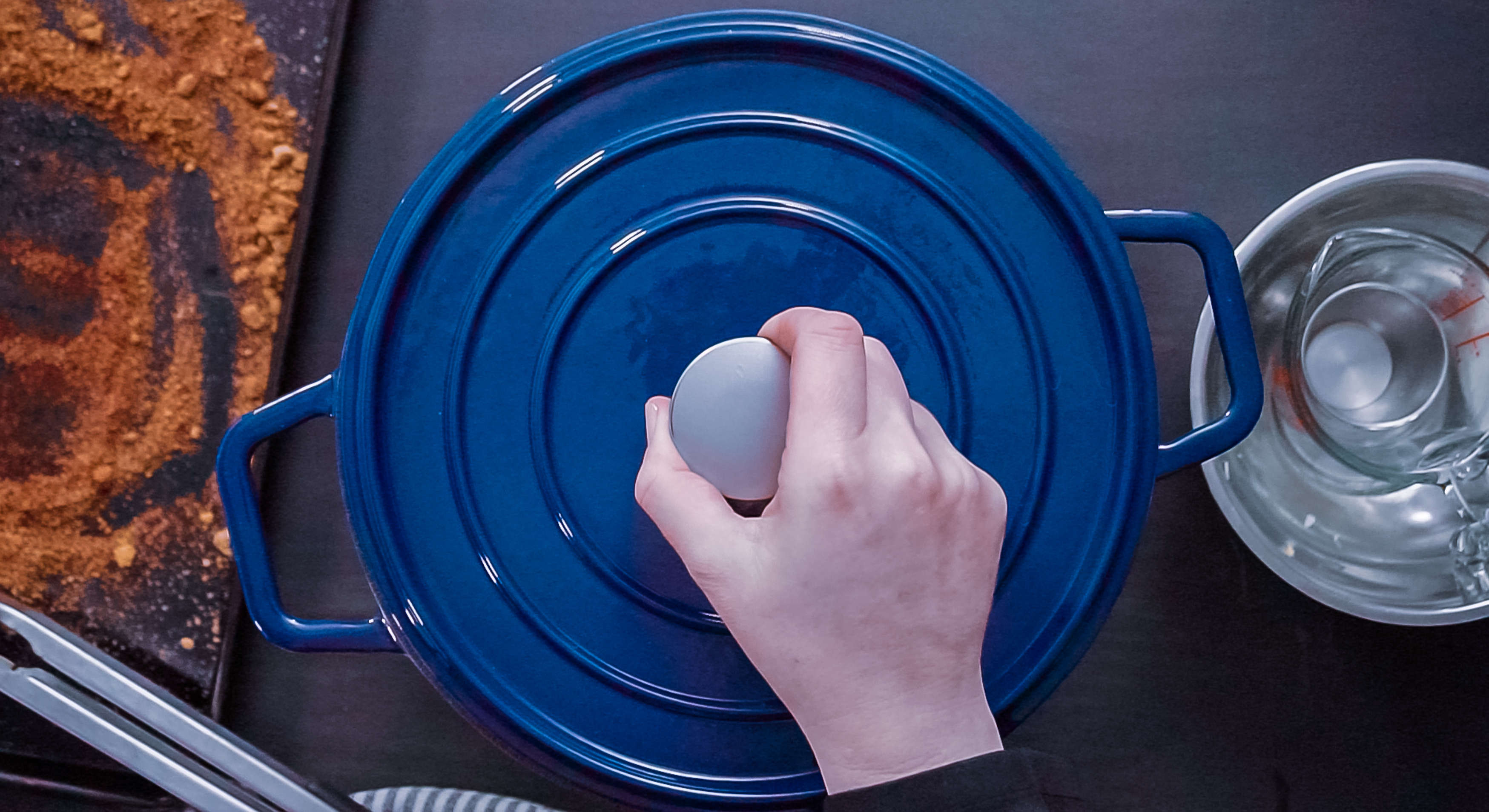
A Dutch oven is a large, heavyweight lidded pot resembling a wider version of a stock pot. It has thick walls and two handles on either side, which help to balance the weight of the sturdy pot and its contents when lifting.
Its heavy base traps and retains heat, enabling it to sear and caramelize meat and vegetables, while the tight-fitting lid seals in heat, moisture, and flavor.
The joy of using a Dutch oven is its versatility. It can be used on a stovetop and in the oven, making it ideal for browning meat on the stove, then placing in the oven to braise and slow cook. And it’s ideal for cooking soups, stews, sauces, and even bread.
Types of Dutch ovens
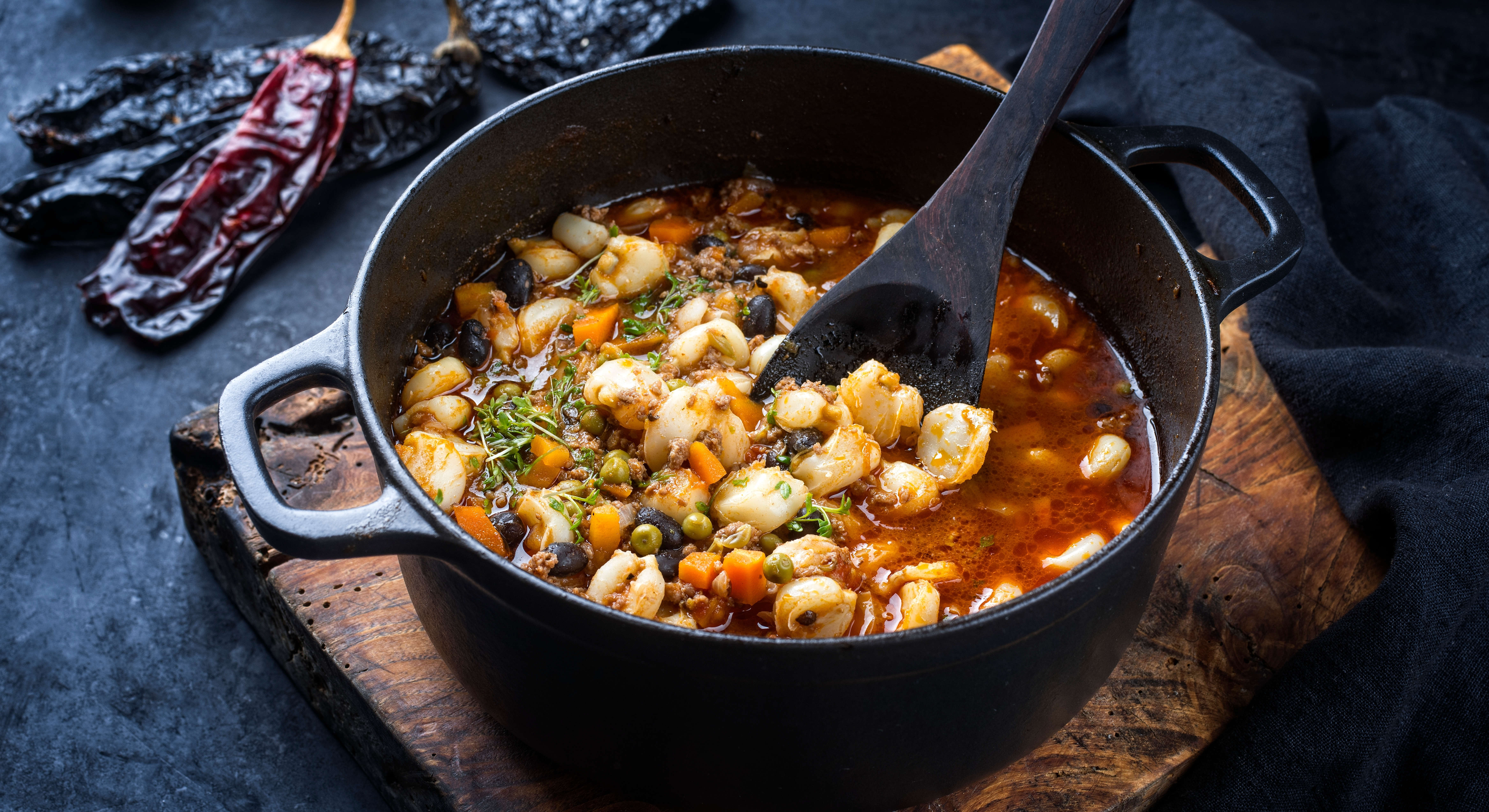
The most popular Dutch ovens are made from cast iron or enameled cast iron, but they are also available in ceramic, stainless steel, and cast aluminum. For the purposes of this article, we're going to look at the top two favorites.
Cast-iron Dutch ovens
Cast-iron Dutch ovens are made from cast iron from the core to the surface and because of this they are always black. They are extremely heavy but stand the test of time and are a worthwhile investment. The benefit of cast iron is that it can withstand high temperatures and has excellent heat-retentive qualities. Once it’s hot, it will remain hot for a long time.
However, it does require some care and maintenance to ensure it stays in tip-top condition. It may need seasoning before the first use and must be seasoned regularly throughout its lifespan to remain functional. However, with the right care, it will remain a go-to kitchen essential which will last.
One main issue with cast-iron is that acidic foods can damage the surface, so if you frequently cook tomatoes, or other acidic foods, such as citrus, then your best option is to buy an enameled version.
Cast iron Dutch ovens are generally cheaper than their enameled counterparts as they don't have the extra coating, for instance the Lodge 5-quart Cast Iron Dutch Oven is available at Target for $49.

Enameled cast-iron Dutch ovens
Technically, enameled cast-iron ovens are known as French ovens, and they have the same heat retentive properties as pure cast iron Dutch ovens. They are particularly popular because they are easier to maintain than traditional cast-iron Dutch ovens.
The cast iron is covered in an enamel coating, improving the pan’s stick resistance, which means it doesn't need seasoning. Enameled cast-iron ovens can also be produced in a delightful array of colors, so leaving them out on the countertop is never an issue.
However, because of the extra process needed to coat the cast iron they are more expensive. The Artisan 5-quart Cast Iron Enameled Dutch Oven in scarlet, is $70 at Home Depot.
What is seasoning?
Seasoning a cast-iron Dutch oven helps improve the stick resistance of the cooking surface, which also protects it from rusting. The seasoning process is the same as when seasoning a cast iron skillet.
1. Place a rack at the bottom of your oven and preheat the oven to 400°F.
2. Give your Dutch oven a scrub with soapy water and a stiff brush, then dry it completely.
3. Use a paper towel to apply a layer of vegetable oil to the Dutch oven. Cover the entire oven, inside and out, including the lid.
4. Place the Dutch oven and lid upside down in your oven for one hour.
5. Turn the oven off, leaving the Dutch oven to cool for 30 minutes before removing it.
6. Check over your Dutch oven to see if you can spot any gaps in the sheen. If so, you may need to repeat the process until the whole surface is covered.
Over time, your cast-iron Dutch oven will lose its non-stick qualities. When this happens, you can reinforce its surface by repeating the seasoning process.
Ways to use a Dutch oven
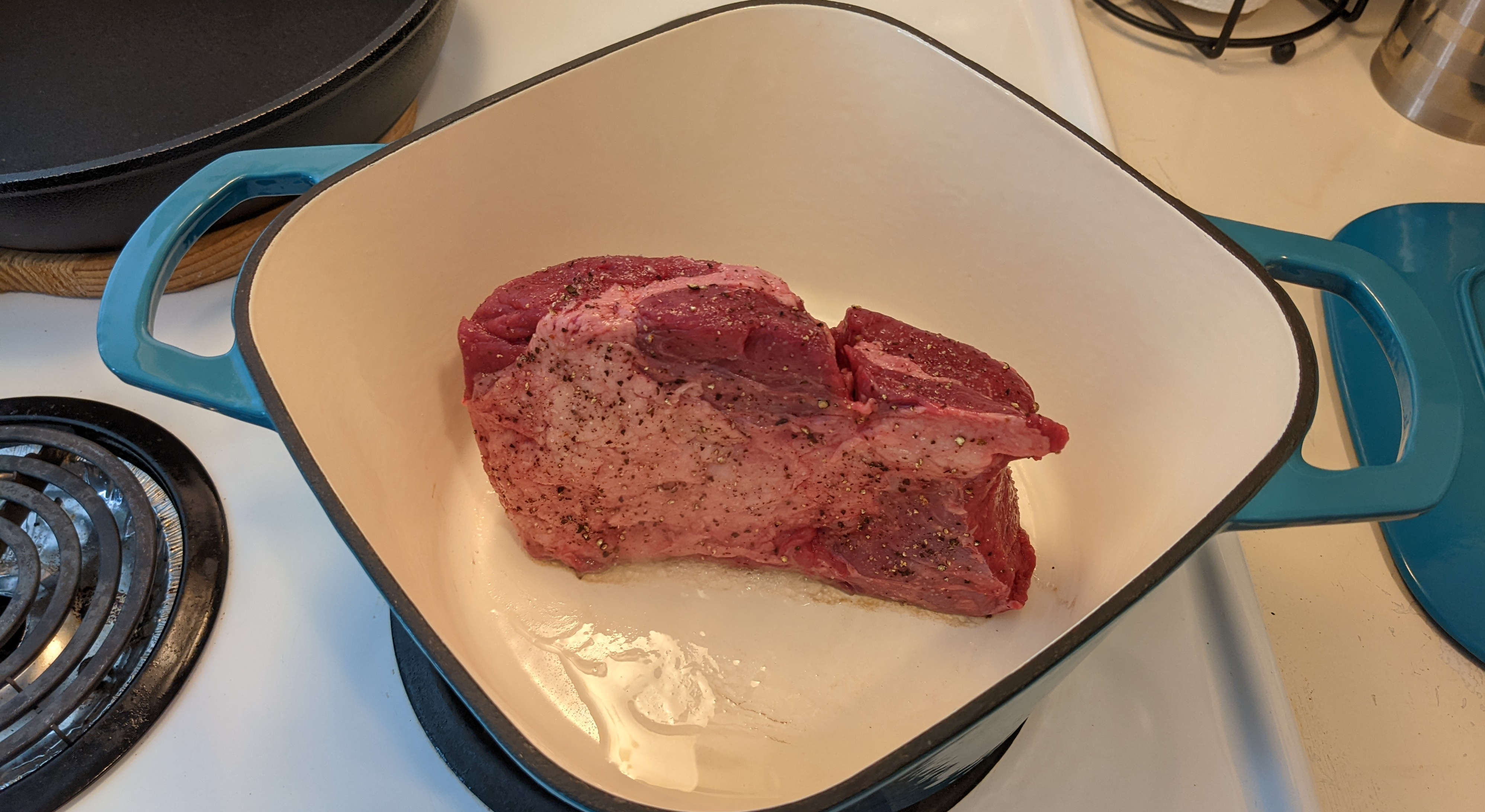
A Dutch oven is an everyday kitchen essential that can be used to cook and bake many dishes on top of the stove or in the oven. I use mine for almost everything apart from frying eggs and baking cakes! And because of its size, it’s ideal for batch cooking — giving you a cook-free night.
Searing
A Dutch oven can produce a perfect sear on meat and vegetables when used on a stovetop before extra ingredients are added to make a stew.
Braising and stewing
The oven’s heat-retentive properties and tightly closed lid create the ideal environment for slow cooking, producing deliciously moist one-pot dinners that can be taken straight to the table.
Frying
The heat achieved also makes a Dutch oven perfect for frying, while its high sides keep in any oil and food splatters, creating less mess to clear up.
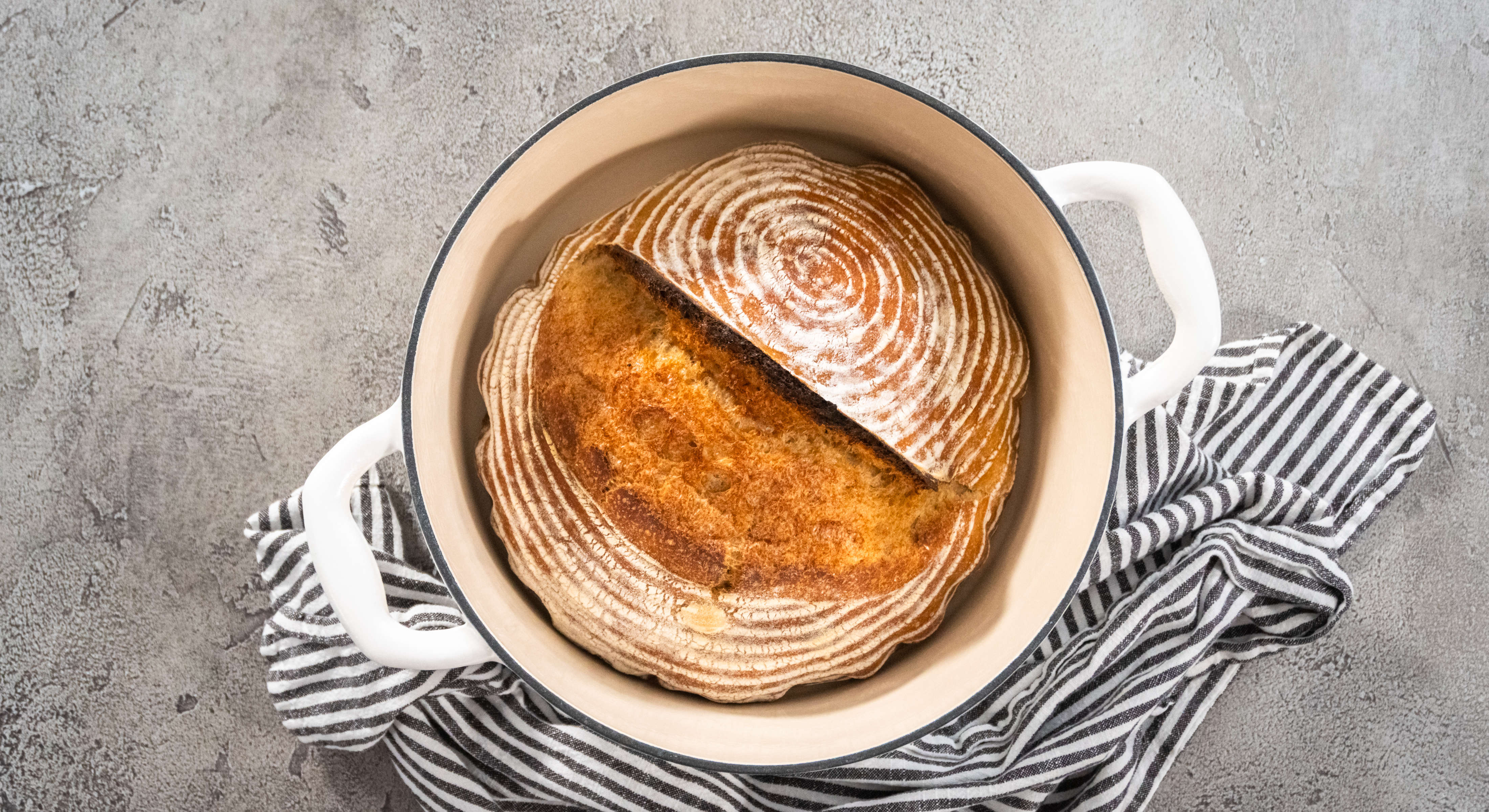
Baking bread
It’s also become famous for baking bread, particularly the no-knead variety. It forms a hot oven within an oven, where the bread is evenly baked to perfection, with the steam generating a crusty loaf.
A Dutch oven can handle almost anything you throw at it — sauces, stews, stocks, and roast chicken. I mostly use mine on the stovetop, rather than the oven, for making curries, rice dishes, and pasta sauces.
How to decide which Dutch oven you should buy
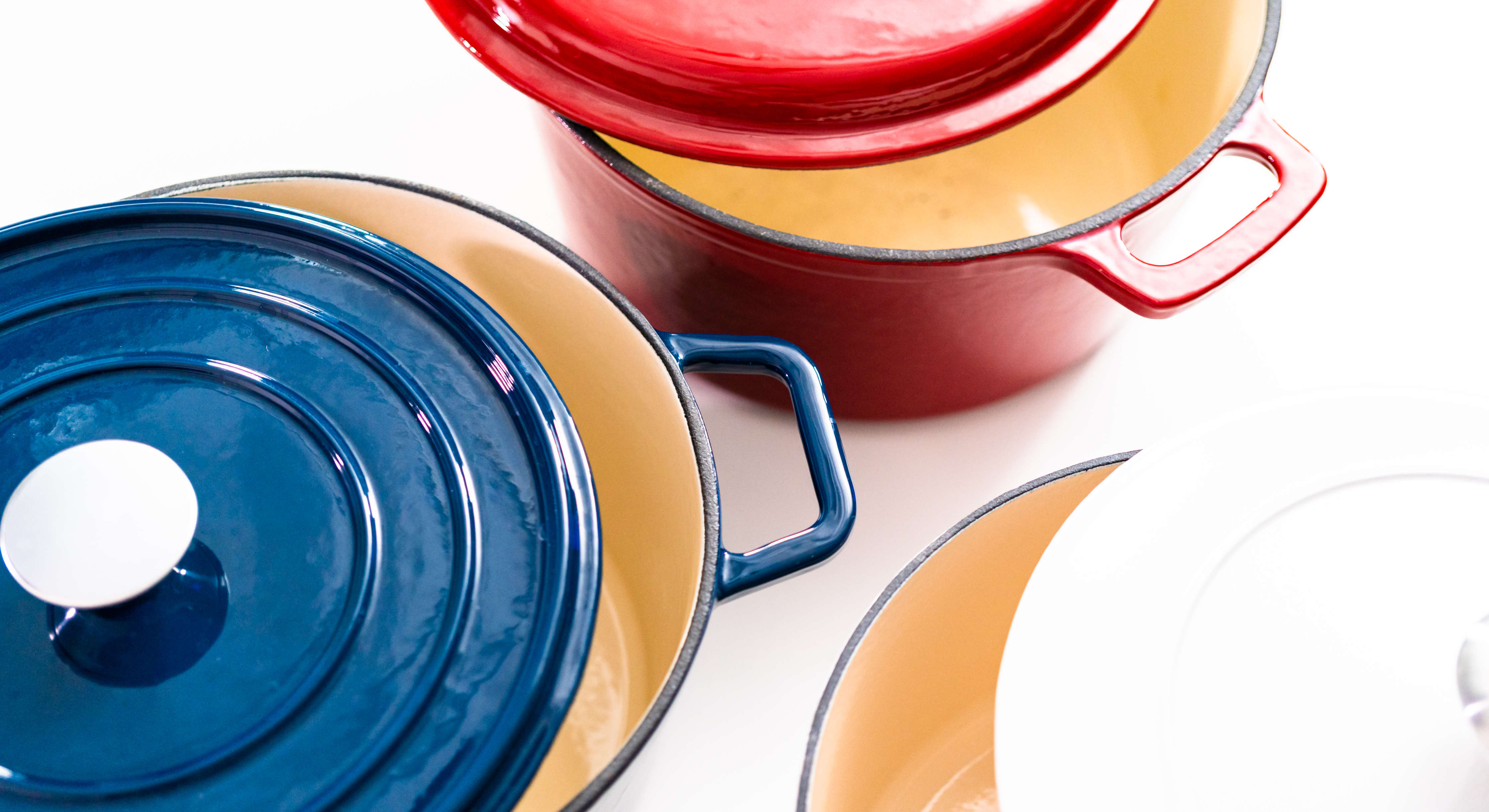
Dutch ovens come in various sizes, so your choice will depend on how many people you’ll feed and whether you want to use it to batch cook.
Lodge Cast Iron recommends using a 1-2 quart Dutch oven for sides, desserts, and sauces, a 3-4 quart pot for 1-2 person meals, a 5-6 quart pan for 4-person meals, baking bread, and cooking chili, and a 7-quart oven and above for a 6-person meal, and for cooking stews and feeding a crowd, with a 9-quart oven suitable for cooking a whole chicken.
You’ll also need to consider the weight of the Dutch oven and what is practical to lift once full. While a 1-quart oven from Lodge Cast Iron weighs just over 4 pounds, a 7-quart oven comes in at over 18 pounds.







